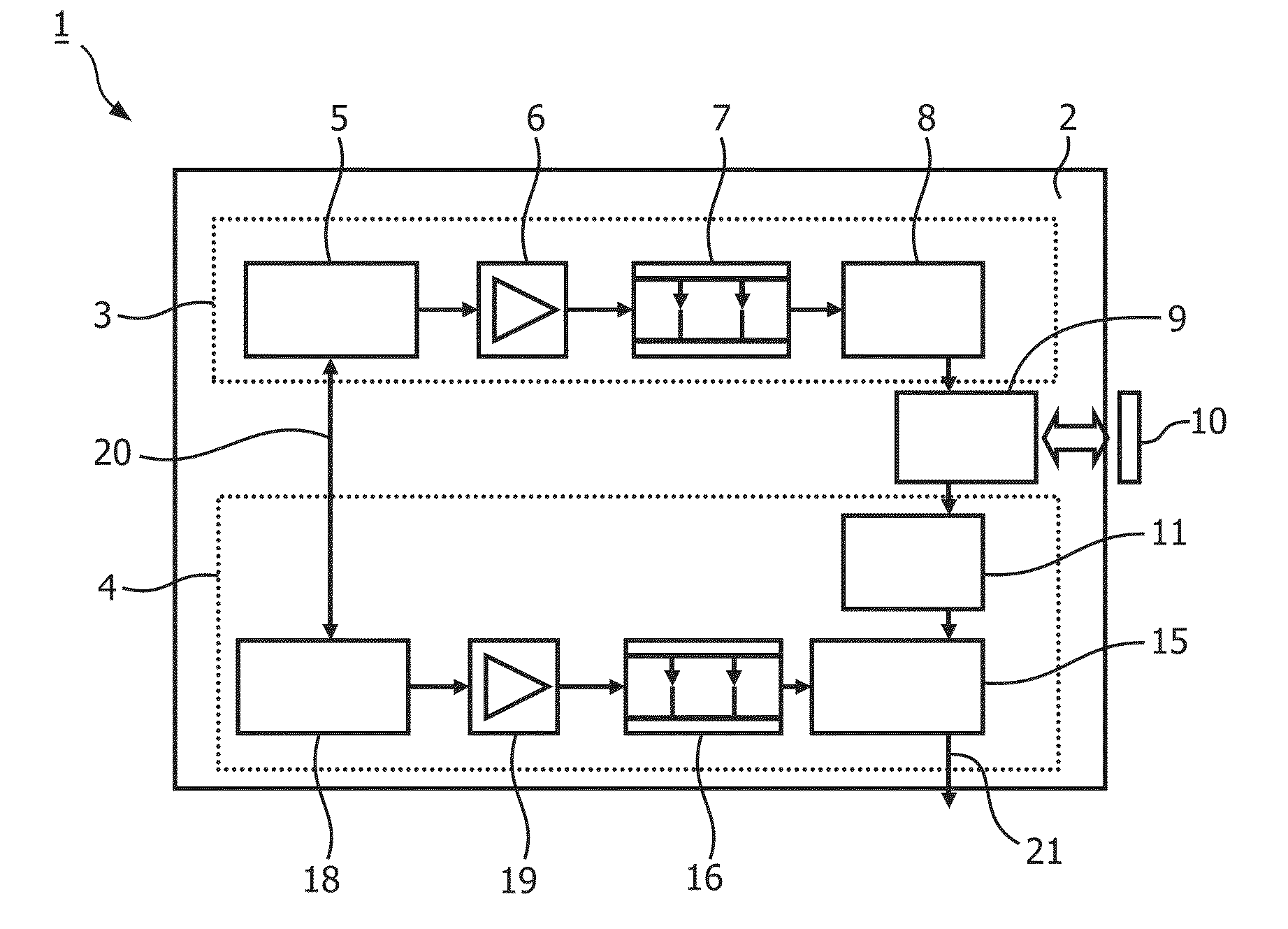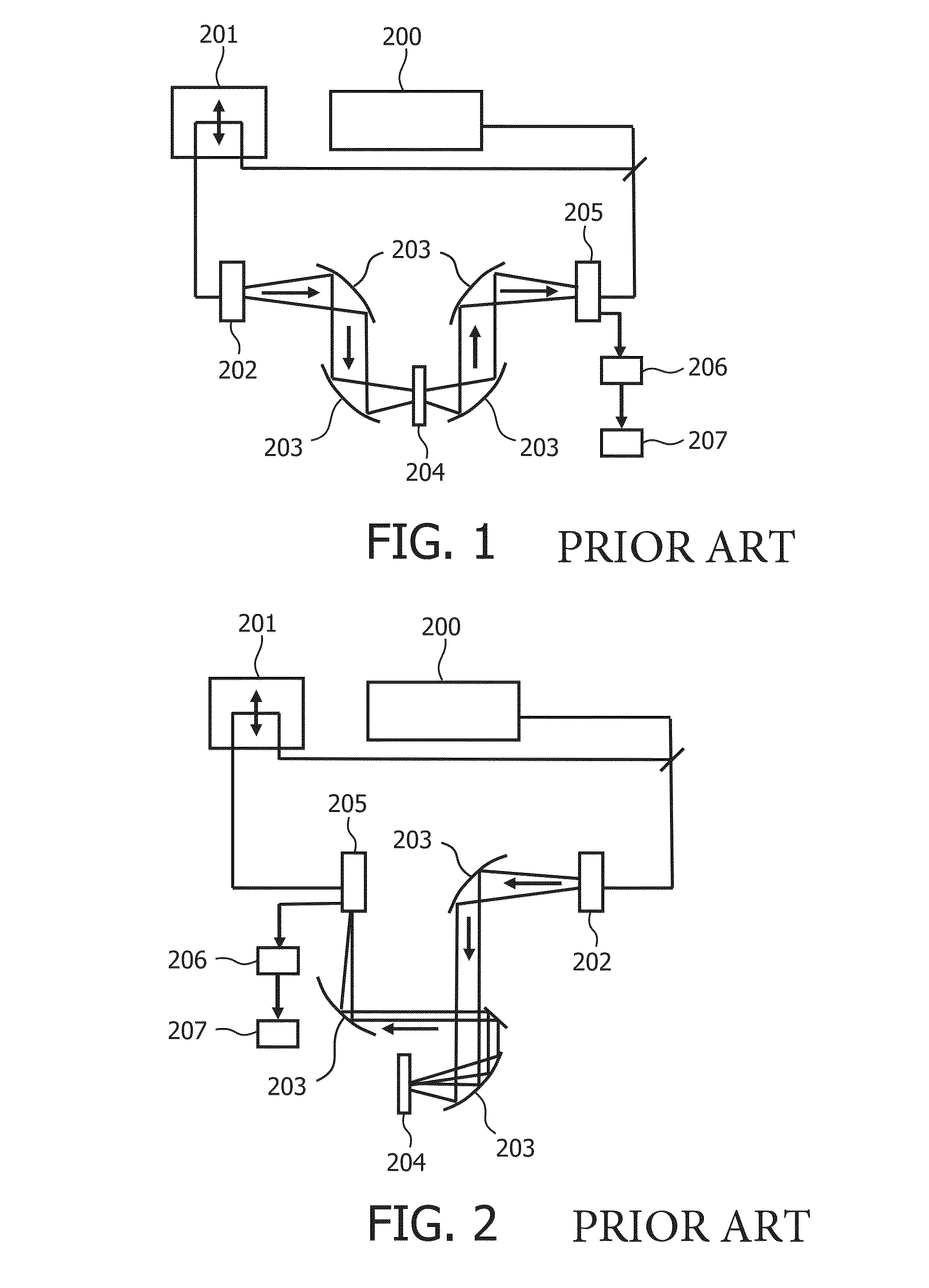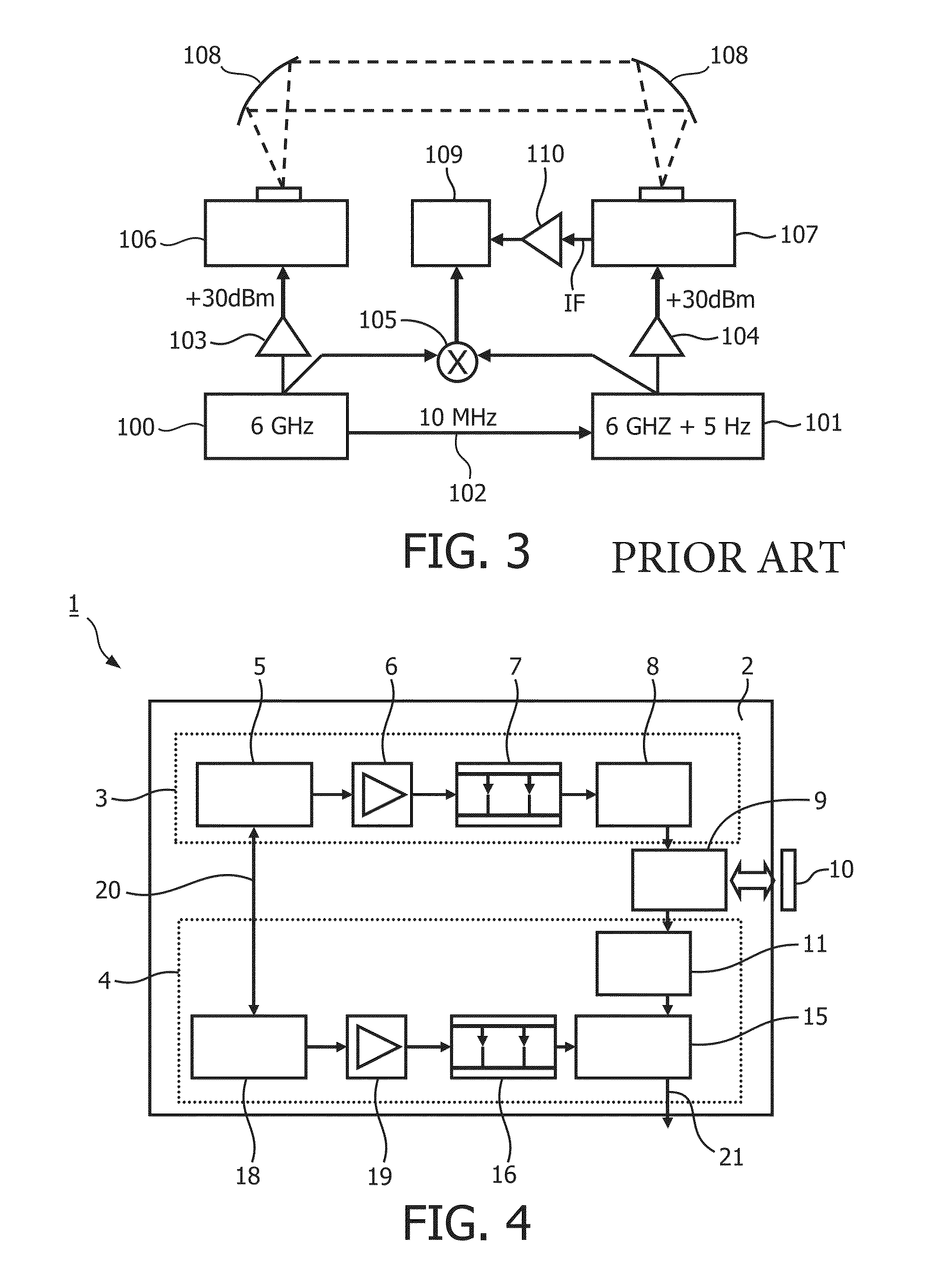Device for analyzing a sample using radiation in the terahertz frequency range
a sample and radiation technology, applied in the field of analyzing samples using radiation in the terahertz frequency range, can solve the problems of bwos being considered very inefficient in the interesting frequency range, femto-second lasers remaining both very bulky and expensive, and preventing the development of complete thz spectrometers. , to achieve the effect of low-cost commercial and increased sensitivity
- Summary
- Abstract
- Description
- Claims
- Application Information
AI Technical Summary
Benefits of technology
Problems solved by technology
Method used
Image
Examples
first embodiment
[0029]A first embodiment of the present invention will now be described with reference to FIG. 4. The device for analyzing a sample using radiation in the terahertz frequency range schematically shown in FIG. 4 is a fully-integrated THz imaging / spectroscopy device, in particular a fully-integrated lab-on-chip terahertz spectroscopy device.
[0030]In the embodiment, all components of the device for analyzing a sample using radiation in the terahertz frequency range are integrated on a semiconductor substrate 2 (semiconductor chip). With nowadays technology, Gallium Arsenide (GaAs) seems to be the most suitable semiconductor to be used for the implementation of the device, so in the rest of the document a GaAs substrate will be considered as the semiconductor substrate 2, but other materials like Silicon could be used in the future if their performance will be good enough. As an alternative, and to reduce cost, two substrates could be used, one for the active part (oscillators and nonli...
second embodiment
[0042]A second embodiment will now be described with respect to FIG. 5. In the device for analyzing a sample using radiation in the terahertz frequency range 30 according to the first embodiment, the THz pulses are generated from a shockwave created using the nonlinear transmission line. It should be noted that at least another method to generate wide-band short pulses is known and could be used in the device for analyzing a sample using radiation in the terahertz frequency range. This other method will be described with respect to the second embodiment.
[0043]The overall set-up of the second embodiment is based on the structure described above with respect to the first embodiment. Therefore, like components are denoted with like reference signs and their description will be omitted. However, the method to generate wide-band short pulses differs from the first embodiment. This method is based on the recently introduced soliton oscillator 51, composed by a special amplifier 53 with a ...
PUM
| Property | Measurement | Unit |
|---|---|---|
| terahertz frequency | aaaaa | aaaaa |
| surface plasmon | aaaaa | aaaaa |
| plasmon | aaaaa | aaaaa |
Abstract
Description
Claims
Application Information
 Login to View More
Login to View More - R&D
- Intellectual Property
- Life Sciences
- Materials
- Tech Scout
- Unparalleled Data Quality
- Higher Quality Content
- 60% Fewer Hallucinations
Browse by: Latest US Patents, China's latest patents, Technical Efficacy Thesaurus, Application Domain, Technology Topic, Popular Technical Reports.
© 2025 PatSnap. All rights reserved.Legal|Privacy policy|Modern Slavery Act Transparency Statement|Sitemap|About US| Contact US: help@patsnap.com



